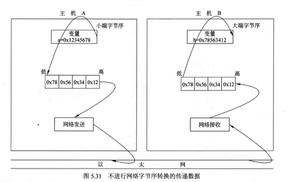Python扩展内置类型详解
除了实现新的种类的对象以外,类有时有用于扩展Python的内置类型的功能。主要有以下两种技术:
通过嵌入扩展类型
下例把一些集合函数变成方法,而且新增了一些基本运算符重载,实现了新的集合对象。对于多数类而言,这个类只是包装了Python列表,以及附加的集合运算。
#File setwrapper.py
class Set:
def __init__(self,value=[]):#构造函数
self.data = []
self.concat(value)
def intersect(self,other):#求交集
res = []
for x in self.data:
if x in other:
res.append(x)
return Set(res) #返回一个新的Set
def union(self,other):#求并集
res = self.data[:] #复制self.data
for x in other:
if not x in res:
res.append(x)
return Set(res)
def concat(self,value):
for x in value:
if not x in self.data:
self.data.append(x)
def __len__(self): # len(self)
return len(self.data)
def __getitem__(self,key): # self[i]
return self.data[key]
def __and__(self,other): # self & other
return self.intersect(other)
def __or__(self,other): # self | other
return self.union(other)
def __repr__(self): # print
return 'Set:' + repr(self.data)
if __name__ == '__main__': #测试用例
x = Set([1,3,5,7])
print(x.union(Set([1,4,7])))
print(x | Set([1,4,6]))
print(x[2])
print(x[2:4])
重载索引运算让Set类的实例可以充当真正的列表。运行结果如下:
>>>
Set:[1, 3, 5, 7, 4]
Set:[1, 3, 5, 7, 4, 6]
5
[5, 7]
通过子类扩展类型
从Python2.2开始,所有内置类型都可以直接创建子类。
这样让你可以通过用户定义的class语句,定制或扩展内置类型的行为:建立类型名称的子类并对其进行定制。类型的子类实例,可以用在原始的内置类型能够出现的任何地方。
例如,假如你对Python列表偏移值以0开始计算而不是1开始一直很困扰,这时你就可以编写自己的子类,定制列表的核心行为,如下:
# File typesubclass.py
#Map 1..N to 0..N-1; call back to built-in version
class MyList(list):
def __getitem__(self,offset):
print('(indexing %s at %s)'%(self,offset))
return list.__getitem__(self,offset-1)
if __name__ == '__main__':
print(list('abc'))
x = MyList('abc')
print(x)
print(x[1])
print(x[3])
x.append('spam')
print(x)
x.reverse()
print(x)
在这个文件中,MyList子类扩展了内置list类型的__getitem__索引运算方法,把索引1到N映射到实际的0到N-1。运行结果如下:
>>>
['a', 'b', 'c']
['a', 'b', 'c']
(indexing ['a', 'b', 'c'] at 1)
a
(indexing ['a', 'b', 'c'] at 3)
c
['a', 'b', 'c', 'spam']
['spam', 'c', 'b', 'a']
有关另一个类型子类的例子,可以参考bool类型的实现,可以看到bool类是int的子类,有两个实例(True和False),行为就像整数1和0,但是继承了定制后的字符串表达方式来显示其变量名。
以上是 Python扩展内置类型详解 的全部内容, 来源链接: utcz.com/z/333246.html




